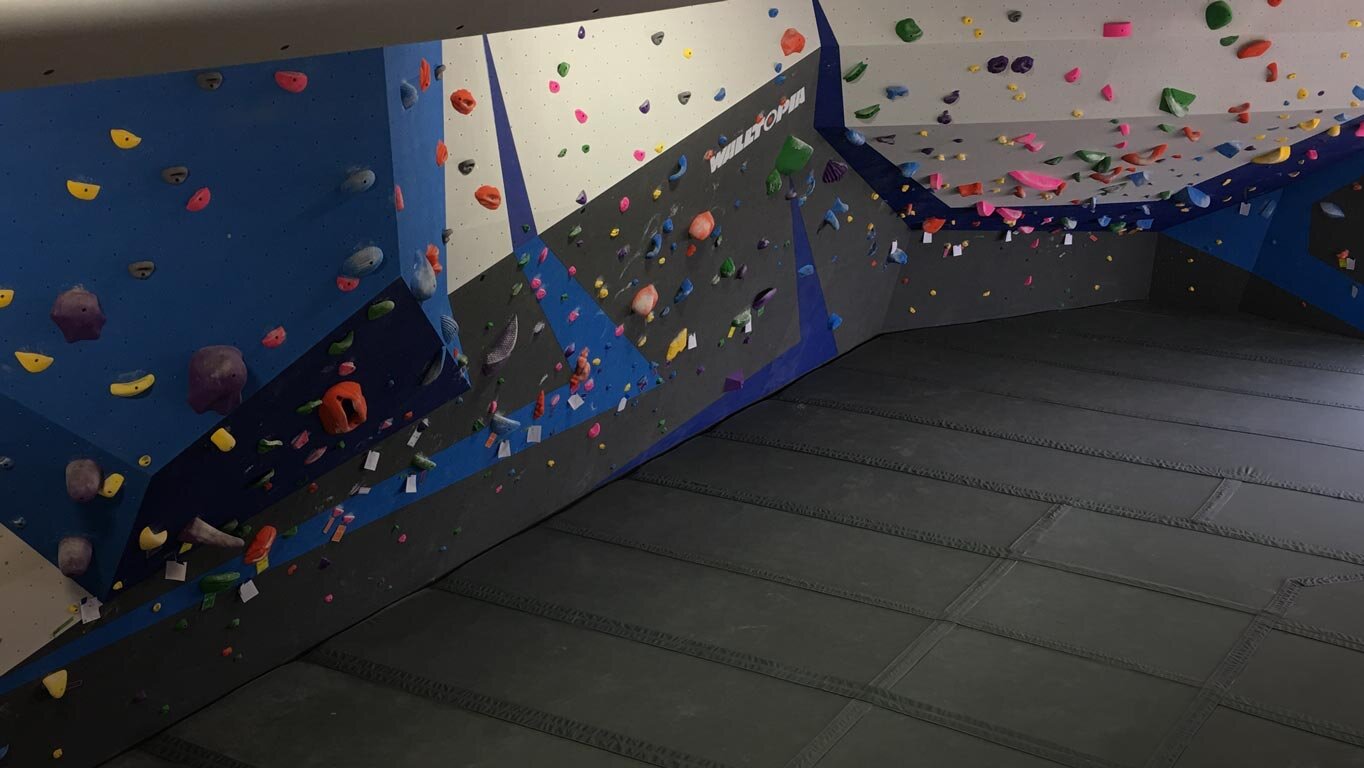
Bouldering Gym Padding
It is the Flashed philosophy that a bouldering system be uniform and consistent.
There should be minimal changes in height of the landing surface. This allows the climber to learn how they will be landing no matter where they are on the wall or in what orientation they are falling in.
The Setup
Planning out your bouldering padding during the early stages can lead to significant cost savings and ultimately a better user experience. To understand your specific needs, whether you’re building new or renovating an existing area, we offer many services, including on-site visits, full gym analysis, laser mapping, and CAD modeling.
We will provide our recommended fall-zone specifications, work with your ADA and/or egress requirements, and develop a padding system that delivers the best composition and thickness for your budget, use, and style.
Multiple Layers
Imagine driving a car towards a red stoplight and depressing the brakes harder and harder until you stopped. How would that feel? Maybe a harsh bouncing back and forth, whiplash, general discomfort! What would your passengers think? Foam can loosely be compared to a coil spring. The more you compress it, the more it pushes back.
So if you fall onto a bouldering floor made of only one foam slab, then it may be soft for the first few inches, but as you compress it more, the foam becomes more stiff and hard before pushing that recoiled energy back into your knees and body as the foam cells force their way back up. Not the ideal system.
Press and hold on the brakes evenly and you consistently slow down arriving at a stop with little bounce-back. Using two or more layers of varying stiffness (firm at the top and softer at the bottom), we can smartly control the fall, giving a better catch to the climber with little bounce at the bottom, saving those knees.
Additionally, stiff foam at the top means more support when walking across the padding to and from problems and greater durability, another element of performance when the gym has heavy traffic. Fall on a Flashed padding system – we believe you’ll feel the difference in the performance and comfort of this intelligent impact attenuation system in a way that stands out from our competitors.
We designed everything we do in bouldering padding, thinking about the tens of thousands of climbers that will come through your doors and climb on your walls.
Thickness
Foam thickness must be carefully considered. The general industry practice is 1in of foam per 1ft of fall height but this is just a starting point. From here we must consider the flow of the traffic, layout of the area, impact energy attenuation, and longterm durability.
At Flashed, we can fine-tune areas to handle a wide range of scenarios through use of multiple layers, trained install technicians, and onsite flexibility and adaptability.
The Little Details
- In the design phase, we provide AutoCAD drawings of the layout and design of the facility.
- Under our padding system, we place a vapour barrier to protect against concrete sweating (especially relevant with new slab pours).
- If there is no natural barrier, like a climbing wall, a perimeter will be built using superior fastening materials and custom-made Flashed brackets using 1/4in angle iron.
- Our Cover and Foam include warranties for workmanship and manufacturing defects. Keeping your facility in top shape is a top priority, so turn-arounds with our in-house production minimize any downtime.
Our bouldering padding systems are more than just cover and foam layers. We have numerous unnoticeable aspects that set us apart.
GET A CUSTOM QUOTE

